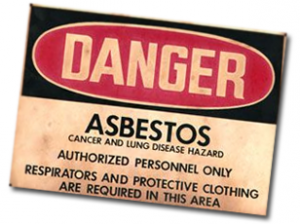
During the early to mid-20th Century, asbestos minerals were mined and widely used by U.S. manufacturers in products such as insolation, fireproofing, brake shoes and clutch pads, roofing and floor tiles. Asbestos use declined after it was discovered to cause diseases, including lung cancer, asbestosis and mesothelioma (a form of cancer). Following asbestos exposure, it can often be decades before the symptoms of asbestos-related diseases begin to surface.
Recently, a study revealed that mesothelioma rates could take decades to fall following an asbestos ban. According to survivingmesothelioma.com, the study was conducted by researchers at the Occupational Health Unit of the Local Health Authority of Padua and involved 1,600 cases of pleural mesothelioma that occurred between 1987 and 2010.
In 1992, Italy implemented an asbestos ban, which the country expected to lead to an eventual decrease in mesothelioma rates. However, according to the researchers’ findings, mesothelioma rates actually increased during the 23-year span. According to the researchers, because it can take mesothelioma symptoms between 10 and 50 years to surface, it will take decades before Italy’s mesothelioma rate will see a significant decline.
“Future projections indicate that the [mesothelioma rate] will decrease after the incidence peak of 2010,” wrote the study’s primary author in a report in Cancer Epidemiology.
The U.S. still has yet to enact a ban similar to Italy’s with regard to asbestos. According to the results of this study, if the U.S. bans asbestos, it could take over two decades before it has its intended effect on the mesothelioma rate.
Did You Know: In 1979, hairdryer manufacturers voluntarily stopped using asbestos in their products, according to Cancer.gov.
Harrell & Nowak, L.L.C.– Louisiana Mesothelioma Attorneys
